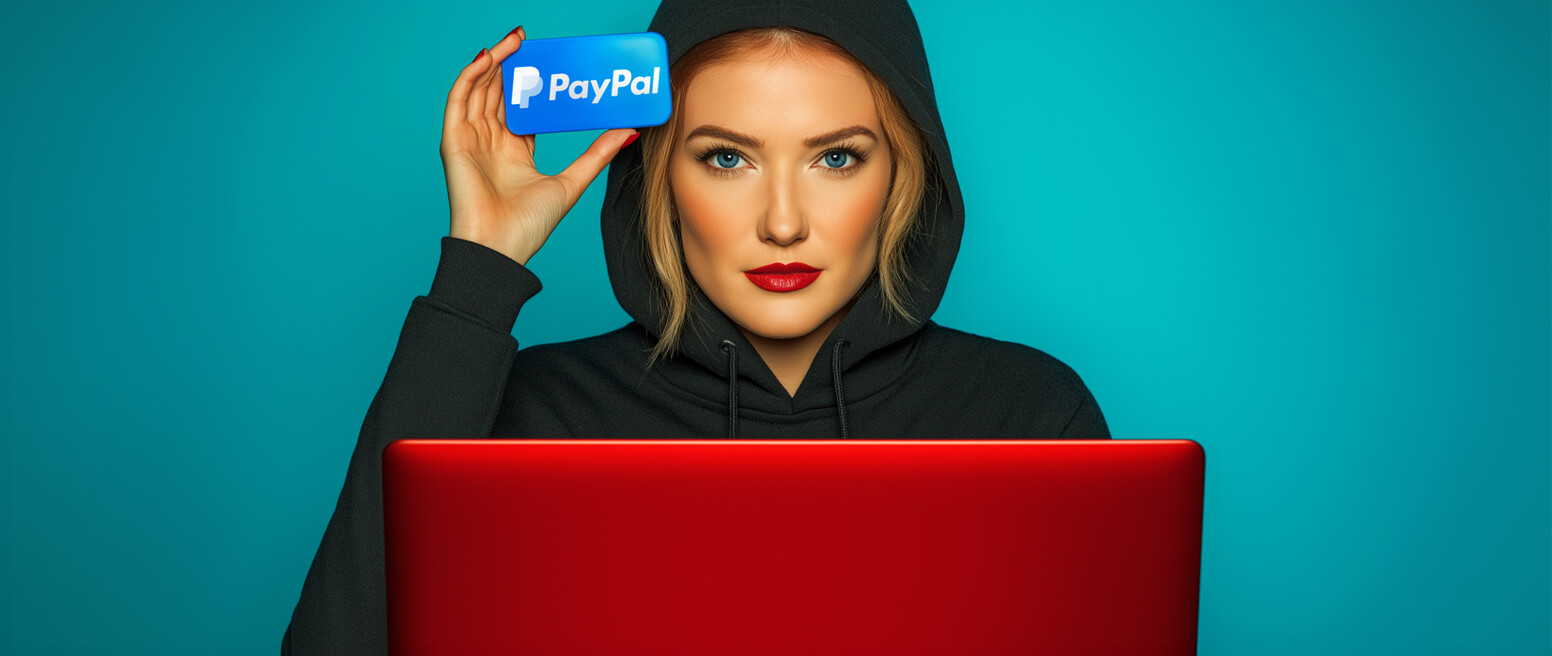Paypal Account Limitations: Why is PayPal Restricting My Activity?
In a perfect world, buyers and sellers would exchange funds for goods and services without a single hiccup. Items would be delivered on time, services would be rendered with a smile, and no mistakes would ever be made.
Unfortunately, that isn’t the world we live in.
PayPal account limitations can be a pain. They don’t have to be the end of the world, though. Let’s talk about why and how you might receive an account limitation and how you should respond.
Recommended reading
- 20 Ways to Identify & Prevent PayPal Scam Emails
- eBay Resolution Center: The Guide for Buyers & Sellers
- PayPal Refund Scams: How They Work & How to Stop Them
- PayPal Dispute Fees: How PayPal Chargeback Fees Work
- The Top 12 PayPal Scams to Watch for in 2024
- PayPal Purchase Protection: What is it & How Does it Work?
What are PayPal Account Limitations?
- PayPal Account Limitations
PayPal account limitations are temporary restrictions placed on your PayPal account that could prevent the withdrawal, sending, or receiving of money. Limitations may be placed on accounts that bear unusual activity, are non-compliant with PayPal terms, or exceed acceptable dispute thresholds.
[noun]/* pā • pal • ə • kount • lim • ə • tā • SH(ə)ns/
Having account limitations doesn’t necessarily mean that you’ve done anything wrong. Instead, they’re intended to help protect both the buyer and the seller from suspicious charges or unscrupulous activity. This way, PayPal serves as a mediator between buyers and sellers to secure accounts and improve the customer experience.
That said, PayPal account limitations exist to encourage sellers to resolve disputes through the PayPal Resolution Center as quickly as possible. Failure to do so can impact their ability to conduct future transactions through PayPal.
How to Check if you Have PayPal Account Limitations in Place
Usually, if your PayPal account is limited, your ability to initiate transactions, accept payments, or process transactions could be placed on hold.
In some cases, you might receive a notification by email or on your account overview page. You should respond to this warning quickly by logging in to your PayPal account and taking the necessary actions outlined in the message. This may help you avoid account limitations altogether, and applies to both buyers and sellers.
If you're a seller, and you suspect that PayPal may have placed a restriction on your account, the first thing you should do is log in to your PayPal Business account and visit the Resolution Center to review the details. There, you’ll also find an outline of any information that’s been requested by PayPal.
Learn more about the PayPal Resolution CenterPayPal information requests will vary depending on the issue at hand. Some examples of commonly-requested documents include:
- Invoices from your suppliers
- Information about payments
- Proof of shipment and/or tracking information
- A buyer’s account or payment information
- Proof of address
- Proof of identity
Why Do PayPal Account Limitations Happen?
Setting an account limitation is PayPal’s way of alerting you that there are problems with your account. These issues could stem from a single questionable transaction, a single instance of non-compliance, or repetitive disputes. While none of these are necessarily your fault, PayPal may still limit your account activity to prevent the situation from worsening.
In any case, there can be several reasons for a PayPal account limitation:
PayPal Account Limitations Resulting From Disputes
We want to offer a little more context for that point outlined above. It’s important to remember that PayPal disputes and credit card chargebacks are not quite the same thing.
Traditional chargebacks are strictly regulated by card networks like Visa and Mastercard. They can only be filed when a credit or debit card was used to make a purchase. If a customer wishes to dispute a PayPal transaction directly through their bank, that process will remove PayPal from the equation.
On the other hand, PayPal disputes may be handled through the PayPal Resolution Center in many instances. But, if the matter can’t be resolved through this process, PayPal will limit your account until any issues are rectified. If the problem persists, PayPal may restrict or cancel your account for future use.
Whatever the case, if your account receives too many disputes, there’s a good chance PayPal will limit your account. This may be a temporary move while they investigate if any further action should be taken…or it could be a permanent move.
Removing PayPal Account Limitations
According to PayPal, the time it takes to lift account limitations varies depending on the issue. The fastest way to keep the process moving is to submit the requested information as quickly as possible. Once you have, PayPal will get back to you in three business days or less and instruct you on the next steps to take.
Generally speaking, if your account has been limited due to any of the above issues, you should contact PayPal immediately to determine the appropriate response. Aside from this, however, there are several steps you can take to fight back against illegitimate disputes and claims.
You can dispute a claim in the PayPal Resolution Center within 10 days after you receive notification of the PayPal claim against you. If you don’t respond during that time frame, PayPal will automatically rule in the buyer’s favor. If you do respond in time, make sure to include the following in your response:
All evidence should be reiterated in a concise, clearly written summary. This will be similar to drafting a rebuttal letter. In both cases, you’re providing information, as well as a statement to give context and explanation for what you’re providing.
Remember, though: regardless of your efforts here, no seller will ever be able to insulate themselves against disputes and chargebacks fully. As long as you buy and sell items online, you should expect the occasional issue with your products or services. It can happen to any merchant; it’s not something to beat yourself up over.
However, receiving an abnormally high amount of disputes and chargebacks can be a big problem for you. It creates issues for PayPal, too, which is why they would impose PayPal account limitations in the first place. As a general rule, it’s best to do everything in your power to mitigate any errors in your business practices long before an account limit gets imposed.
5 Ways to Avoid PayPal Account Limitations
Protecting your ability to do business and avoid PayPal account limitations should be your top priority. The best way to do this is to stop disputes from happening in the first place.
Adopting a few best practices now can drastically reduce headaches later. To that end, we recommend that you try the following:
#1 | Meet Seller Protection Requirements
The Paypal Seller Protection Program is designed to protect online sales, mitigate fraud, minimize disputes, and improve customer confidence. Additionally, see if you can demonstrate that a disputed transaction was legitimate through the above methods. In that case, PayPal may waive any fees and allow sellers to retain full transaction amounts.
#2 | Avoid Questionable Transactions
You should avoid conducting “high-risk” transactions through PayPal whenever possible. For example, selling items that do not comply with PayPal’s Acceptable Use Policy. Other practices considered “high risk,” like selling high-dollar value items or engaging in crowdfunded programs, may require additional screening or fraud detection software.
#3 | Avoid Unauthorized Transactions
The most common PayPal claim stems from unauthorized transactions. These occur when a buyer claims that the transaction was not initiated or authorized. According to PayPal, you can avoid these claims by:
- Confirming orders before shipping
- Clearly labeling and displaying the correct company logo and business credentials on statements and packaging
- Verifying duplicate orders
- Requiring signatures and proof of delivery for all orders
- Taking precautions when shipping overseas
- Investigating suspicious buyers and transactions
#4 | Avoid “Item Not Received” Claims
Accidents can happen when shipping goods all over the globe. That said, “item not received” disputes are a common tactic for fraudsters looking for a quick scam. The fraudster may claim an order was never delivered, then subsequently file a dispute with their credit card network or PayPal. To avoid this type of dispute, you should:
- Confirm orders before shipping
- Require signatures and proof of delivery for high-value orders
- Provide clear delivery dates and shipping/tracking notifications
- Never use a buyer’s personal shipping label
#5 | Avoid “Not as Described” Claims
A buyer might claim the item they ordered is not the one they received, or that it had an imperfection or was damaged. To avoid these disputes, you should:
- Ensure your product descriptions accurately reflect your products
- Ship on time and provide tracking information
- Include high-res images of the product from every angle in your description
- Provide excellent customer service
Protect your PayPal Account From Limitations
Getting hit with PayPal account limitations is serious business. It doesn’t need to be a kiss of death, though.
You can avoid a majority of the disputes and claims that could shift your business into the PayPal hot seat. All you need is a bit of foresight and dedication to best practices.
That said, no amount of internal ‘furniture’ rearrangement will alter the fact that you will remain on the receiving end of fraud and illegitimate disputes. True fraud prevention and risk mitigation requires a more comprehensive approach.
To learn about chargeback management help that goes beyond the minimal assistance offered through PayPal and other processors, talk to Chargebacks911® about a free chargeback analysis today.
FAQs
What are PayPal Account Limitations?
PayPal account limitations are temporary restrictions placed on a specific account that could prevent withdrawing, sending, or receiving money. Limitations may be placed on accounts that bear unusual activity, are non-compliant with PayPal terms, or exceed acceptable dispute thresholds.
Why Do PayPal Account Limitations Happen?
Setting account limitations is PayPal’s way of alerting a user about problems with their account. These issues could stem from a single questionable transaction, a single instance of non-compliance, or repetitive disputes. While none of these are necessarily the user’s fault, PayPal will limit the account to prevent the situation from worsening.
What Should I Do if My Account is Limited?
If your account has been limited, you should contact PayPal immediately to determine the reason and decide on an appropriate response.
If your account has been limited due to a dispute claim, you have the right to respond through the PayPal Resolution Center within 10 days after you receive a notification. If you don’t respond during that time frame, PayPal will automatically rule in the buyer’s favor.
How Can I Avoid PayPal Account Limitations in the Future?
PayPal sellers can reduce future account limitations by implementing best practices. For example, you should ensure that you meet Seller Protection requirements, reject questionable transactions, and avoid claims tied to unauthorized transactions, and try to avoid “item not received” and “item not as described” claims.













